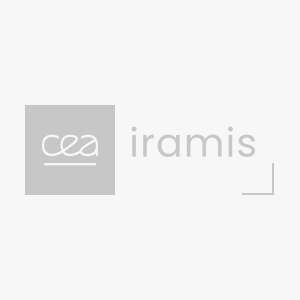Domain, Specialties : Material physics
Keywords:
Surfaces, interfaces, imaging, microscopy, PFM, LEEM, PEEM
Research Unit : SPEC/LENSIS
Summary
This internship focuses on the characterization of ferroelectric (FE) domains in hafnium zirconium oxide (HZO) films. We propose to train the student to use several surface imaging techniques (piezoelectric force microscopy, PFM, low energy electron microscopy, LEEM, and x-ray photoemission electron microscopy, PEEM) for this purpose. The results from this study will allow understanding the effects of the metal electrode/FE layer interface in the polarization switching mechanisms.
Full description
Ferroelectric materials are characterized by the presence of a spontaneous polarization, whose orientation can be reversed by the application of an external electric field. This property finds an important application in information technologies, notably in non-volatile memories (NVM) where information can be encoded in the form of a ferroelectric domain, i.e. a region of the material with a certain orientation of the polarization (P ‘up’ or P ‘down’) corresponds to an information state (1 or 0).
Currently, hafnium zirconium oxide (HfZrO2) is the most promising material for NVM fabrication thanks to its proven compatibility with standard CMOS processes and very low power consumption. HZO paves the way for very high-density mass storage (>10 Tbit/in²) because it retains its ferroelectric properties at very low layer thicknesses (< 10 nm), which allows more polarized domains per unit area.
The size of a domain in a HZO ferroelectric layer is about a few nm, which makes their study complex. We propose to use piezoelectric force microscopy (PFM) to examine them, due to its nanometric resolution and high sensitivity. We will use a particular mode of the technique that allows local writing of the domains and their subsequent imaging. This will allow us to study the phenomena of charge injection and polarization switching. In parallel, the student will use Low-Energy Electron Microscopy (LEEM) and PhotoEmission Electron Microscopy (PEEM) to characterize the surface potential, an inherent property of the material. We expect to elucidate the influence of the presence (absence) of a metal electrode above the ferroelectric layer in the mentioned electrostatic mechanisms.
Location
CEA-Saclay, (91) Essonne, France
Internship conditions
- Internship duration: 5-6 months
- Level of study: Bac+4/5
- Training: Ingenieur/Master
- Continuation in PhD thesis: Yes
- Application deadline: 30 november 2024
Experimental skills
Useful methods and technics:
Piezoelectric force microscopy (PFM)
Low-Energy Electron Microscopy (LEEM)
X-ray photoemission electron microscopy (PEEM)
Langue : Anglais
Supervisor
Tuteur
Lucia PEREZ RAMIREZ
Phone: 01 69 08 47 27
Email :
Head of the laboratory
Nick BARRETT
Phone: 01 69 08 32 72




